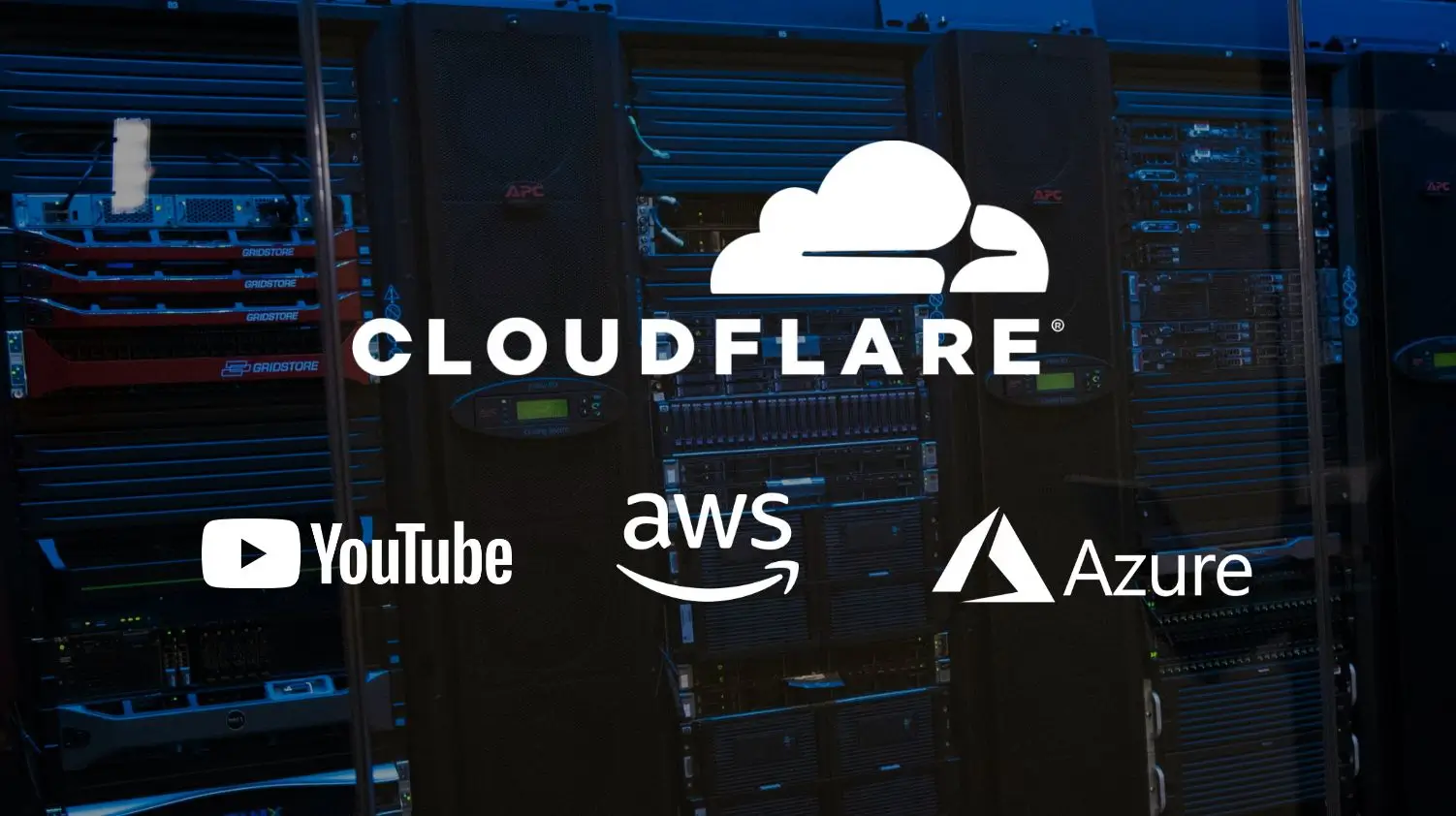Major cloud services and platforms all have had big outages in late 2025.
On October 15 YouTube briefly stopped serving videos to thousands of users worldwide.
A week later (Oct 20th) Amazon’s AWS cloud suffered a DNS/load-balancer failure that knocked out many popular apps (Reddit, Venmo, Zoom, etc).
On Oct 29th Microsoft’s Azure (and even its Office 365) went offline for roughly 8 hours due to a misconfiguration in Azure Front Door.
Then yesterday (Nov 18th) Cloudflare, the giant web‑infrastructure/CDN provider, went down when an auto-generated security config file became too large and crashed its network systems.
In each case the company later resolved the issue, often citing a software glitch or config error, but gave few details. But what could be the underlying causes?


Broader Industry Trends at Play?
These incidents, though different in cause, raise the question: are there broader industry trends at play? Several tech giants have been through major upheavals lately.
Since 2022-24 the sector saw huge layoffs and restructuring. For instance, Google’s parent Alphabet cut approximately 12,000 jobs in early 2023 as it “refocuses on AI”.
Microsoft announced in mid 2024 that it was dropping hundreds of Azure cloud jobs, especially in Azure’s specialised Ops divisions.
Amazon Web Services (AWS) itself shed several hundred tech and sales staff in April 2024 and just announced about 14,000 more corporate cuts in Oct 2025 “driven in part by adoption of artificial intelligence”. That 14k layoff hit many areas, AWS included, as Amazon CEO Andy Jassy said AI would automate routine tasks.
These job cuts and ongoing cost “streamlining” reflect a tech industry pivot. Microsoft and Amazon are prioritising AI heavy projects and saying they will hire more AI specialists even as they eliminate other roles.
The Reliability Gap
Such workforce changes can affect reliability. Cutting experienced engineers or shifting teams can leave less of a safety net when problems arise.
After AWS’s Oct 20 outage, experts warned that many companies had “cut costs and cut corners” on fault tolerance, making them vulnerable. It’s plausible that leaner teams are juggling newer AI driven development tools under pressure, increasing risk of mistakes.
For example, Cloudflare’s outage was due to an automatically generated config file growing too large, one might wonder if that file was created by scripts or AI or simply human error from a small team. In any case, Cloudflare’s CEO recently discussed focusing on “top priorities” and efficiency, suggesting even Cloudflare is vetting it’s head count.


AI Powered Tools and “Vibe” Coding
At the same time, AI powered coding tools are rapidly entering software development, often linked to “vibe coding.” The idea is that a developer (or even a non‑coder) tells an AI what they want and it writes the code.
Early hype suggests anyone can “go with the vibes” and let the AI handle it. But real world experience shows this AI generated “vibe code” is often buggy and inefficient. Industry reports and interviews note that companies are increasingly hiring “rescue engineers” to clean up AI sloppy code.
Freelancers say AI can speed up basic coding tasks, but frequently the output contains subtle errors that take much longer to fix than writing the code manually would have taken. This “AI slop” creates technical debt.
If engineers at Google, Microsoft, or AWS are experimenting with such tools under tight timelines, occasional glitches could slip into production systems.
In short, while AI is boosting innovation, it’s not yet magic. These outages came at a moment when major tech teams are simultaneously cutting staff and tooling up on AI.
Globalisation of Tech Work
Another factor is globalisation of tech work. Many U.S. tech firms have been expanding “Global Capability Centers” in India and elsewhere, shifting high end development to overseas hubs. Whilst many companies all around the world have also shifted jobs aboard.
U.S. visa changes (like higher H-1B fees) are accelerating this. Analysts say American companies are reassessing their labor strategies and moving more AI, product development and cyber work to India GCCs.
In practice, that means some engineering, IT and support roles may be based far from the company’s headquarters. While international teams can be highly skilled, offshore operations sometimes suffer from communication lags or different processes.
Marks & Spencer’s 2025 cyber attack became a high profile example of how globally distributed IT operations can widen the attack surface. The breach, traced to compromised access within an offshored IT service desk, caused major service outages and pushed M&S to cut ties with its overseas support provider and bring more control back in house. It highlighted a growing tension in the globalisation of tech work.


The Interconnectedness of Today’s Web
Of course, none of these outages has been blamed on sabotage or malicious AI.
In every case the companies reported technical causes e.g. Azure’s outage was due to an errant config change in its Front Door service and Cloudflare said its outage came from a mis-sized automatically generated security file.
The sheer interconnectedness of today’s web means even a small glitch can ripple widely. AWS’s Oct outage started in the US-East data center and cascaded out, showing how much depends on a few centralised cloud hubs.
Experts note we live with “fragile infrastructures”, just a single hardware/software fault can disrupt hundreds of services.
Blaze’s View on AI
We’re certainly not oblivious to AI; we see it in nearly every piece of software we use.
Have we used it? Of course! We see its benefits: VS Code hooked up with Copilot sometimes does a good job of finding some docs we need, nicely commenting the function we’ve just written, or even writing small bits of code. AI created this blue flame image, just for a bit of fun!
Did AI review this article? It did! We understand that we want to be articulate (<- that was all me) and clear on the topics we post about whilst trying to keep the “human” tone.
Have we seen issues? We certainly have! AI is often only as good as the “prompt”. Sometimes it doesn’t link to what you’re trying to say, and more often than not it just outright lies.
We see AI as a “tool”, the same as we see Adobe, VS Code, and Screaming Frog. It’s there to help us complete our work to the best standards whilst being as economical as possible for our clients.

Sources: News reports and company statements from Reuters and NPR provide the facts above, links below. Each outage was widely covered, and the broader trends (layoffs, AI adoption, offshoring) are documented in these sources as well.
– reuters.com
– reuters.com
– reuters.com
– reuters.com
– reuters.com
– reuters.com
– reuters.com
– reuters.com
– kuow.org
– reuters.com
